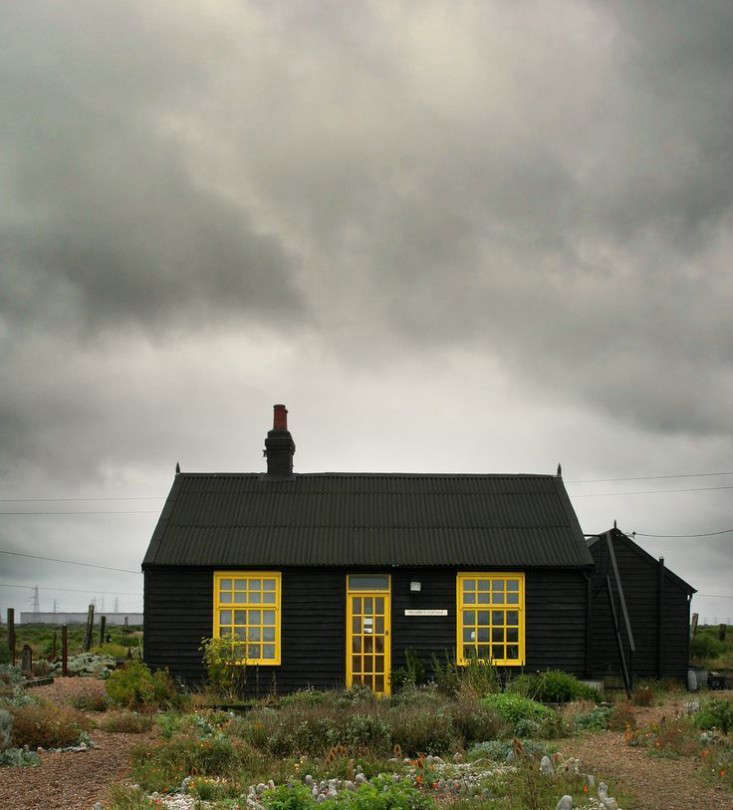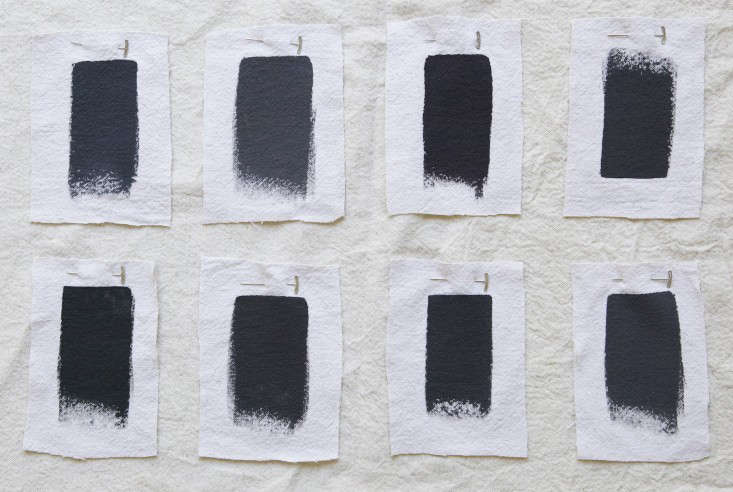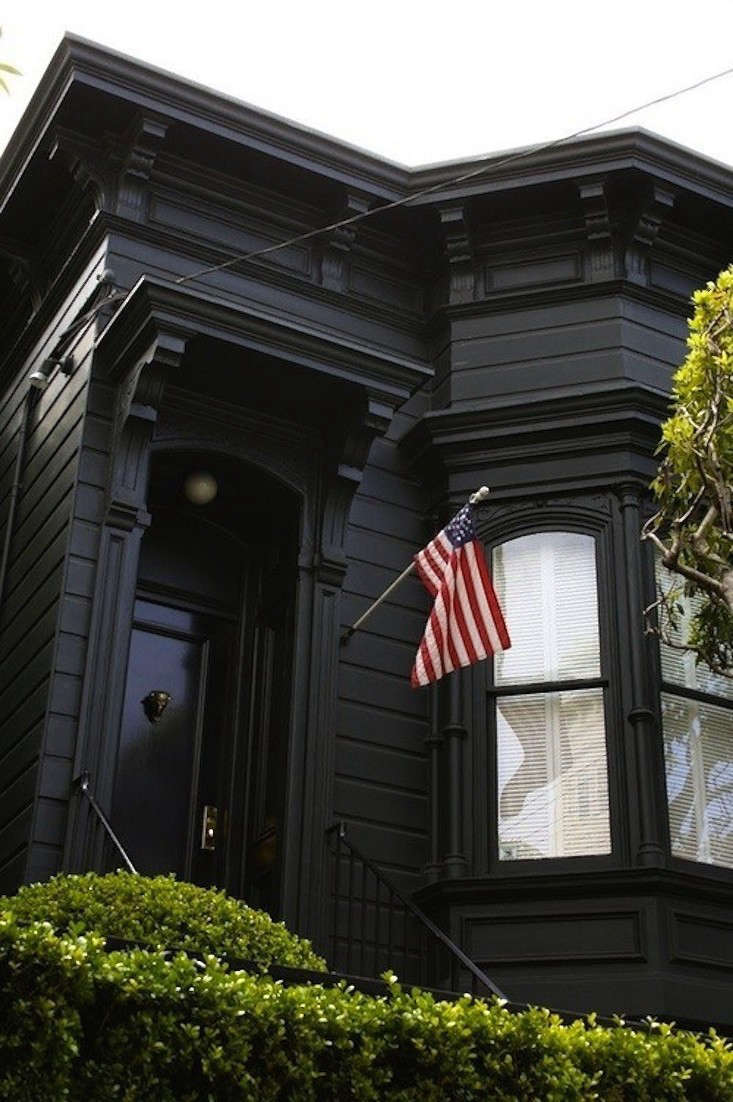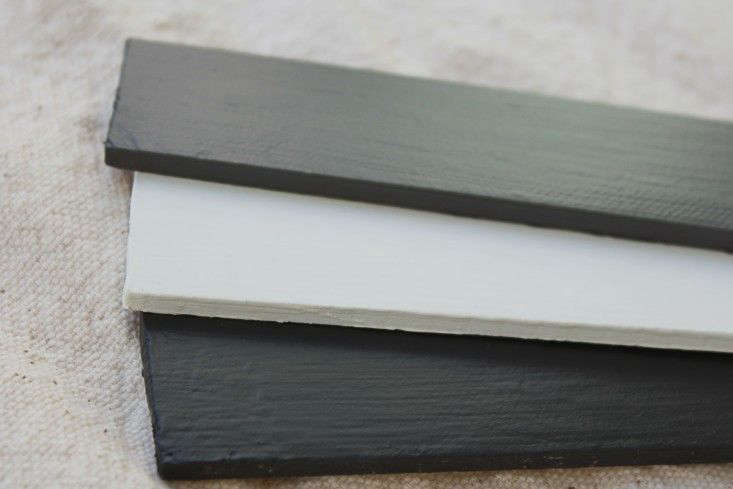Black is a color to take seriously. Dark colors add drama and depth, and black painted houses send a message that you’re not afraid to be noticed. But it’s a high-maintenance color (compared with white). Is black paint the best choice for a facade? Read on (and then tell us what you think in the comments below):
Pros:
Black is Beautiful
There’s no denying the drama and authority of black houses. The color makes a strong visual statement and, like a black dress, needs minimal accessories to complete the look.
Above: A black-painted Victorian in San Francisco owned by Claire Bigbie of Envelope A + D (a member of the Remodelista Architect/Designer Directory). Photograph courtesy of Grant K. Gibson.
A black Victorian facade in San Francisco needs nothing more to dress it up than a single succulent, a multi-branched euphorbia next to the front stoop. For more, see 11 Traditional Houses Gone to the Dark Side.
Basic Backdrop
Black is a good foil for green. In a garden or against natural surroundings, the facades of black houses will recede and focus attention instead on green foliage. This enables the eye to draw better distinctions among different shades of green. Yellow-green leaves and blue-green leaves appear more varied and layered against a black facade or fence, making plantings appear more lush.
Above: In Mill Valley, California a cedar-shingled house is painted in Benjamin Moore’s Black with China White trim. For more of the garden, see Garden Visit: Landscaping a Live-in Summer Camp.
Blank Canvas
Black–like white and gray–is a neutral color and contrasts well with many other materials, textures, and hues.
Above: Photograph courtesy of Ben Herzog Architect.
Black trim and windows creates a dramatic contrast to a brick facade on a Brooklyn townhouse by architect Ben Herzog. For more black houses and factory windows, see Hardscaping 101: Steel Factory-Style Windows and Doors.
Above: The facade of filmmaker Derek Jarman’s black seaside cottage in Dungeness, Kent is lightened by sunshine yellow trim. For more of this garden, see Garden Visit: Derek Jarman’s Prospect Cottage at Dungeness.
The yellow trim lightens the mood of Jarman’s black facade to create a backdrop for a seaside cottage garden.
Cons:
Faded Beauty
Sunlight fades dark colors faster. The paint on black houses will blister and peel faster than a light color. This is because black paint heats up and cools down (expanding and contracting more than a light color) as it absorbs more rays from the sun. (One way to mitigate this problem is with conscientious preparation before painting. The biggest cause of blistering and peeling paint–of any color–is water seeping beneath the surface. Thoroughly scrape and sand a surface before painting to prevent that problem.)
Above: We asked architects to reveal their go-to shades of paint for black houses. For the full list, see Paints & Palettes: Architects’ 8 Top Black Paint Picks.
Blemish Booster
On a surface, black accentuates imperfections. Any blemish, chip, gouge, or flaw on an exterior wall will draw more attention if it’s painted black.

Above: Black on black on a Victorian house in San Francisco with identical trim and body paint color emphasizes the architectural detail of elaborate moldings. Photograph courtesy of Grant K. Gibson.
For more, see 11 Traditional Houses Gone to the Dark Side.
Hothouse Effect
Black houses will absorb more heat from the sun than white houses. A white or light-colored house will reflect more rays, keeping indoor temperatures cooler in hot summer months.
Above: White (and other light colors) will reflect rather than absorb the sun’s rays. For a list of architects’ favorite shades, see 10 Easy Pieces: Architects’ Favorite White Paint Picks.
Dark Shadows
We have strong cultural and historical associations with the color black. It reminds us of Halloween, deepest night, and the Salem witch trials. By painting a house black, you are making a strong statement (and may scare the neighborhood children).
Shades of Gray
Is gray a compromise color? Depending on whether you choose a brown-gray or a blue-gray shade of paint, you can create a warm or a cool mood. By pairing a gray body paint with black trim, you still can signal “dark” intentions while avoiding many of the drawbacks of black (for instance, gray will absorb less sunlight than black).
Above: Photograph by Clementine Quittner for Gardenista. A shade of gray with brown undertones will look warm on a facade. A palette to create the look: from top to bottom, Iron Mountain for the body, Mascarpone for trim, and Black Beauty on a front door. All are Benjamin Moore colors.
Above: Painting the body gray (and the trim black) is another way to create a dramatic facade. Photograph courtesy of Addison Strong Design Studio.
Above: 10 Favorite Shades of Gray Paint run the gamut from warm tones to cool.
Finally, get more ideas on how to upgrade your home’s facade with our Hardscaping 101: Exteriors & Facades design guide.























Have a Question or Comment About This Post?
Join the conversation (18)